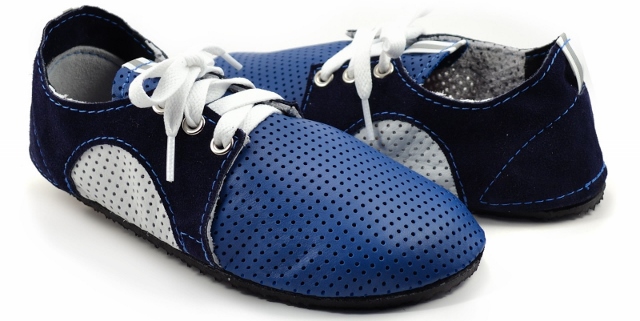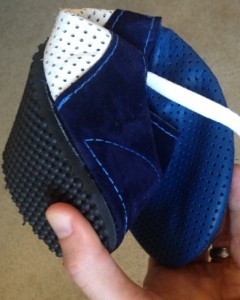Running shoes and accessories could cost you thousands of dollars every single year if you’re a gear junkie. Maybe this looks like you?

Some gear is worth the investment while other purchases are completely superfluous. Do you really need a $79 foam roller when a $20 roller gets the job done just as well?
There are runners who surround themselves with these gadgets and think that they’ll actually enhance or improve their running performances. But unless your gear serves a specific function (and you know how to use it), it’s essentially useless.
For years, all I used to run fast were a cheap Timex watch, a few pairs of running shoes, a sparse amount of clothing, and a good coach.
No GPS watch that cost hundreds of dollars.
No arm sleeves, hydration system, or heart rate monitor.
Hell, I didn’t even use any gels during my long runs.
A better approach to running gear than my extreme minimalism of years past is a more moderate approach. Invest in accessories, shoes, and other gear that helps you achieve your goals but doesn’t distract you from the purity of running.
Training Tools that Work
Most of the time I prefer intangible tools rather than physical objects. I’d much rather pay a coach (I’ve had over ten since I started running) than get the latest version of the Kinvara. Or I’d rather run a tempo by feel than be a slave to a heart rate monitor.
I’ve seen the value – from nearly two decades of competitive running and coaching – of focusing on what really works. Those new calf sleeves might be a sexy recovery tool, but you’ll be better off getting more sleep.
Instead of being the cranky purist runner who runs barefoot in the same pair of shorts every day (I contemplated it!), I do like to test certain training tools and report my findings back to you.
This helps you choose what’s best for you personally and you get some perspective on how a particular piece of gear can fit into a good running program.
Today I’m going to highlight a pair of shoes that can be used for a very specific reason and a “no-brainer” product that every runner should own.
RunAmoc Dash Running Moccasins

The folks at Soft Star Shoes asked if I’d be willing to test and review their new RunAmoc Dash minimalist running shoe. As a “cautious minimalist” I know that a little bit of barefoot running or in very low-profile shoes is all you need, but the Dash could potentially be a great training tool for building foot and lower leg strength.
Since I’m a natural skeptic of niche shoes (like Newton or Skora), I agreed and eagerly started wearing the shoes casually to see how they felt. Before I get into that, here are the specs:
- Zero heel-toe drop (no difference in height between the heel and forefoot)
- 5mm Vibram Trail sole (they offer a 2mm Street sole as well)
- Weight: 5.0-9.5oz depending on size, fabric, and sole choice
I got the blue and white leather shoes that you see above. I’m partial to blue and they look nice enough that I could wear them casually, while some other color combinations wouldn’t match anything. I’m a man of style, obviously.
The RunAmoc Dash deliver everything a pure minimalist shoe should: an incredibly wide toe box that allows for proper toe splay with no interference, a very thin zero-drop sole, flexibility, and absolutely no arch support.
The most interesting aspect of the Dash to me is the sole because of its simplicity. It’s just a small strip of rubber similar to the old Nike Waffle racing shoes. There are no bells or whistles, foam, support “systems,” or shock absorbing heel crash pads.
Simplicity is often best and I think these will work well for barefooters or those who want to take a more extreme step on the minimalist spectrum.
Now of course, I can’t review the RunAmoc without commenting on the beautiful upper. Suede? Leather? The Dash has both and they present a very unique shoe that many absolutely love. While it’s not my personal style (you can see the shape of your toes through the leather, which weirds me out), I respect its craftsmanship and the fact that it’s made in the USA.
Nevertheless, I love wearing them casually as a way to keep my foot and alignment in a neutral position. Being so close to the ground in a zero-drop shoe helps strengthen your feet and lower legs – while keeping your Achilles tendon at its correct length.
Because of the flat design and level of thickness of the sole, running in the Dash was awkward for me. Very minimalist shoes irritate my IT band so I didn’t extensively test these while running. Just a few minutes was all I needed to confirm that my ITBS would rear its ugly head if I pressed onward.
But you’re not me and you may love Soft Star’s new RunAmoc Dash. Give them a try if you’re looking very a minimalist shoe that gives you absolutely no support (but doesn’t look as weird as Vibram FiveFingers).
Darn Tough Vermont Socks (yes, socks)
I reviewed a pair of Darn Tough socks for one reason only: they have an unconditional, lifetime guarantee with no questions asked. For socks!
In their words:
Simply and without strings or conditions: if our all weather performance socks are not the most comfortable and durable socks you have ever worn, return them for another pair or your money back. No strings. No conditions. For life. When you are really serious about something you make it yourself.
So I had to review them. I felt compelled to beat the crap out of these socks as best I could to see if they could hold up to the demands of high mileage and fast workouts. I tried to run them into the ground.
For four months, I ran hundreds of miles in them (often wearing them for my two longest runs every week). I wore them for:
- Grueling long runs that included many sub-6:00 miles
- A 2:50 marathon
- Hot, humid track workouts
They’ve seen the insides of six different pairs of running shoes. My single pair of Darn Tough Vermont socks have run in the rain, on the roads, and along muddy trails in DC’s Rock Creek Park. I don’t use the gentle cycle when I wash them nor do I dry them on low heat (I’m such a BAMF).

Here are the specs of the sock model I tested:
- 67% Merino Wool, 29% Nylon, 4% Lycra Spandex
- No-show, ankle height
- High density cushioning (thickness seemed average)
- Reinforced heel and toe with invisible seam construction
After all that abuse, they’re still just as functional as when I first put them on!
To say that I’m impressed is an understatement. I run a lot more than most people and I purposefully ran as much as possible in my Darn Tough socks to see if they’d start falling apart. And they didn’t even come close.
Instead of showing some glossy stock photos of the socks, the pictures here were taken only one day before this post was published. Not a single thread out of place!
I never noticed the wool heating up my feet and even during sweaty, humid runs my feet emerged mostly dry because of the sock’s wicking properties. Darn Tough’s sizing chart might run a little big as the medium (size 7.5 – 9.5) was perfect for my size 10 foot.
I rarely have nothing negative to say about a product, but these are the real deal. Well done, Darn Tough Vermont. Well done.
You can check them out on Amazon for the largest selection and best prices.
Now my question for you: what pieces of gear do you consider indispensable training tools that help you run faster, easier, or with fewer injuries?